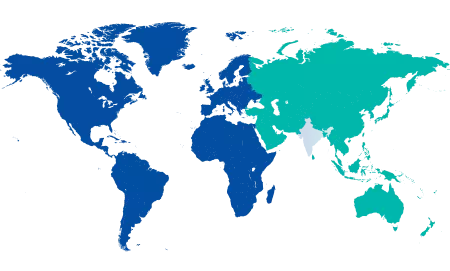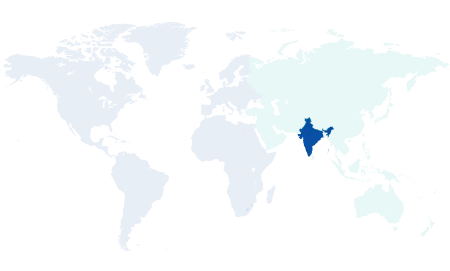
The high humidity and intermittent rain create the perfect conditions for food and water contamination during the monsoon. This is why there is an increase in cases of stomach infections and diarrhea during the monsoon. From mild discomfort to severe dehydration, these illnesses can take a toll on your health if not addressed early. Having knowledge of diarrhea symptoms and knowing how to identify symptoms of gut infection can be the difference between receiving care in time and not.
In this blog, a leading gastroenterologist in Vijayawada discusses the common causes of diarrhea and other stomach infections, their warning signs, and ways to take care of yourself during the monsoon season.
Synopsis
Types of Stomach Infections in Monsoon
The monsoon diarrhea symptoms may be indicative of a spectrum of infections ranging from bacterial to parasitic to viral. The following are the most prevalent ones you might encounter.
1. Viral Gastroenteritis (Stomach Flu)
Viral gastroenteritis is a very contagious virus caused by norovirus and rotavirus. It can spread through contaminated food, water, or touching an infected person. Monsoon weather helps the virus to spread more especially in areas with poor sanitation. It infects the stomach and intestines and causes inflammation and an upset stomach.
Symptoms
-
Non-bloody, watery diarrhea.
-
Nausea and vomiting.
-
Abdominal pain or cramps.
-
Low-grade fever.
-
Headache or body aches.
-
Mild dehydration, such as dry mouth, dizziness, decreased urination.
Treatment and Care.
-
Take plenty of fluids, ideally oral rehydration solution (ORS).
-
Take a light diet of easily absorbed foods.
-
Rest to recover from the body.
-
Avoid anti-diarrhoeal drugs except on a doctor's prescription.
-
Practice good hygiene to avoid transmitting the virus.
-
Disinfecting and cleaning infected surfaces and personal belongings.
-
Wash hands thoroughly before eating or preparing food, and after using the toilet.
2. Bacterial Gastroenteritis
It is caused by bacteria like E. coli, Salmonella, Shigella, and Campylobacter, which grow rapidly in hot and damp environments. It usually develops from eating raw meat, unpasteurised milk, or contaminated vegetables and water.
Symptoms
-
Acute onset of diarrhea, which may be bloody at times.
-
Severe pains in the abdomen.
-
Fever and chill.
-
Nausea and vomiting.
-
Loss of appetite.
-
Dehydration signs.
Treatment and Care.
-
Replace fluids and electrolytes lost with ORS or electrolyte beverages.
-
Do not take solid foods until the vomiting clears.
-
Seek medical attention if the symptoms are severe or persistent.
-
Antibiotics could be given to certain strains of bacteria.
-
Use safe food handling and complete cooking to avoid reinfection.
3. H. pylori Infection
Helicobacter pylori is a bacterium that infects the lining of the stomach and may lead to chronic gastritis, peptic ulcers, and even contribute to stomach cancer. Infection can develop during childhood but may go undetected for years. It is transmitted through contaminated food, water, or utensils.
Symptoms
-
Pain or burning in the stomach, usually worse when the stomach is empty.
-
Frequent burping and bloating.
-
Loss of appetite.
-
Nausea or vomiting.
-
Weight loss for no reason.
-
Dark or tarry stools.
Treatment and Care.
-
Two antibiotics together to destroy the bacteria.
-
PPIs to decrease stomach acid.
-
Bismuth subsalicylate in certain treatment plans.
-
Avoidance of irritants like NSAIDs, alcohol, and spicy food.
-
Follow-up tests to ensure the infection is gone.
4. Parasitic Infections: Giardia, Cryptosporidiosis, and Amoebiasis
Parasitic stomach infections prevail during the monsoon season because of water contamination. They are brought about by microscopic parasites like Giardia lamblia, Cryptosporidium, and Entamoeba histolytica (amoebiasis). The infections are transmitted through contaminated food, water, and poor hygiene, usually where sanitation is poor.
Symptoms
-
Diarrhea that is loose or watery (occasionally containing mucus or blood in amoebiasis).
-
Abdominal distension and cramps.
-
Nausea and occasional vomiting.
-
Weakness and tiredness.
-
Weight loss in the case of prolonged infection.
-
Fever in some instances.
Treatment and Care.
-
Prescription drugs like metronidazole, tinidazole, or nitazoxanide.
-
ORS or electrolyte solution hydration.
-
Avoiding tap water and maintaining strict hygiene.
-
Disinfecting and cleaning infected surfaces and personal belongings.
-
Repeated stool tests to confirm the infection has disappeared.
When to See A Doctor
Most mild stomach infections improve with rest, fluids, and home care. But some situations need prompt medical attention to prevent complications. See a doctor if you notice.
-
Persistent diarrhea lasting more than 2–3 days without improvement.
-
Bloody stools or stools with mucus.
-
High fever above 101.3°F.
-
Severe abdominal pain.
-
Signs of dehydration such as dry mouth, dizziness, reduced urination, or confusion.
-
Persistent vomiting that prevents you from keeping fluids down.
-
Infections in infants, young children, older adults, or those with chronic health conditions, as they can deteriorate quickly.

Prevention Tips During Monsoon
Stomach infections are far easier to prevent than to treat. Simple everyday habits can go a long way.
-
Drink safe water. Stick to boiled, filtered, or bottled water.
-
Avoid street food during the rainy season. Avoid raw salads and chutneys.
-
Wash hands thoroughly before eating or preparing food, and after using the toilet.
-
Cook food fresh and ensure meat, seafood, and eggs are well-cooked.
-
Store leftovers properly in the refrigerator and reheat them before eating.
-
Peel fruits instead of eating them raw with the skin. Or they must be washed thoroughly.
-
Use clean utensils and crockery to avoid anything that might have been rinsed with unsafe water.
-
Stay away from untreated water sources such as roadside tea stalls or uncovered water containers.
Conclusion
Monsoon stomach infections can be from a mild nuisance to a severe disease if neglected. Early detection of diarrhea symptoms, proper hydration, and timely treatment are the secrets of a safe recovery. Safe food and water practices are the habits required to lower the risk further.
If severe symptoms become more persistent in you or your family members, contact our best gastroenterologists at Manipal Hospital Vijayawada for a proper diagnosis.
FAQ's
Loose or watery stools, abdominal cramps, bloating, fever, and dehydration are the most typical diarrhea symptoms observed during this season.
Nausea, vomiting, feverishness, pain in the abdomen, and alteration in the consistency of the stool are some of the earliest symptoms of a stomach infection.
The most common forms of stomach infection are viral gastroenteritis, bacterial gastroenteritis, parasitic infection such as giardiasis and amebiasis, and H. pylori infection.
Mild illnesses can get better with rest, water with oral rehydration solution, and bland foods such as rice, bananas, and yoghurt. Always consult a doctor if symptoms get worse.
Drink safe drinking water, do not eat street food, heat food well, and practice strict hand washing to avoid infection.





















 6 Min Read
6 Min Read








15.png)
.png)
14.png)









